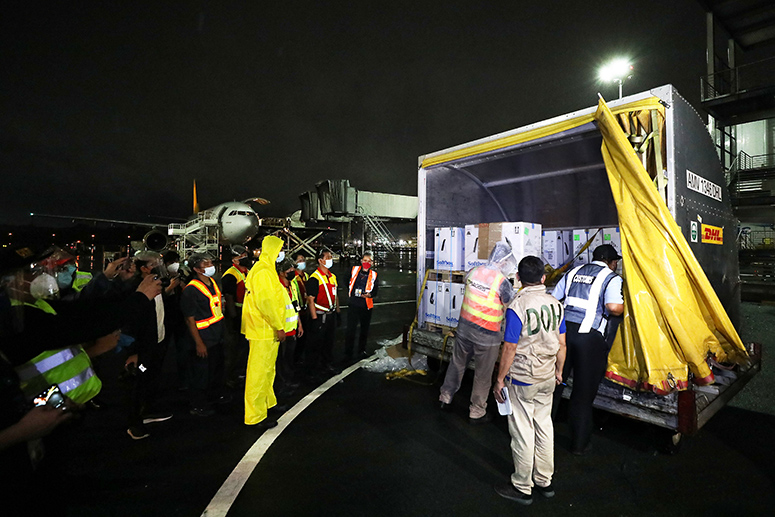Why are only 9.6 percent of Filipinos vaccinated?
When normalcy seems close enough to touch, we suddenly get jolted by news that spikes in COVID-19 are erupting again. We have to live with the reality that the virus will be here to stay and that the only way to manage the spread is to race to the vaccination goal.
Data compiled from government sources worldwide by www.ourworldindata.org at the University of Oxford showed how countries fare compared to jab targets. The list of countries is led by the United Arab Emirates, with 79 percent of the population vaccinated, followed by Malta (77 per cent), Iceland (74 per cent), Singapore (73 per cent), Uruguay (72 per cent), Chile (71 per cent) and Canada (71 per cent).
Time and billions of vaccinated individuals have silenced the naysayers. The only thing that can slow this down is really the availability of vaccines.
Closing their gap to 70 per cent are Qatar and the United Kingdom (69 per cent), Belgium and Denmark (68 per cent), the Netherlands (67 per cent), Bahrain and Aruba (67 per cent), Mongolia and Finland (65 per cent), Israel, Portugal and Ireland (64 per cent), Spain (63 per cent), Luxembourg (62 per cent), Italy (61 per cent) and Germany (60 per cent).
The United States is at 56 per cent, Brazil at 45 per cent, Hong Kong 39 per cent, Japan 35 per cent, Malaysia 32 per cent, India 24 per cent, Thailand and Indonesia at 16 per cent and the Philippines at 9.6 per cent.
A total of 3.73 billion doses of vaccine have been administered, or roughly 49 doses per 100 people. The numbers above reflect the percentage of population who received the jab. I just used these instead of the slightly lower fully vaccinated numbers, since the premise is that the vaccination will be fulfilled.
Social media is a confusing source of information for many regarding why or why they shouldn’t get vaccinated. But time and billions of vaccinated individuals have silenced the naysayers. The only thing that can slow this down is really the availability of vaccines.
What do we now know? We know that COVID-19 vaccines are not experimental and went through clinical trials branding them safe and effective. If you have been vaccinated, you know that there are measures in place for safety monitoring after the jab. While the vaccine is not an assurance that you will not get the virus, it will prevent you from getting seriously ill.

I myself have been fully vaccinated for some time now. Everything was a breeze. I am diabetic so I was part of the priority category. After applying for an appointment online, I received a message a few days after from BAKUNAMKT confirming a venue with an appointment date and time.
Everything was well organized; my only issue (in April) was how few people there were compared to the big team of Makati vaccination personnel. The crowd was four times more, though, when I got my second jab, which indeed was a good sign that more people are opting for vaccination.
One of the doctors connected with the Makati Health Department, Dr. Maria Rosario Silverio, an OB-gynecologist, shared her insights.
THE PHILIPPINE STAR: What are the three most common reasons preventing people from getting themselves vaccinated?
MARIA ROSARIO SILVERIO: One, some people still believe that COVID is not true. After more than a year of this pandemic, some non-believers still think that COVID is only made up by the DOH, WHO or developed countries.
Second is the fear that once they get the jab, it will weaken them and eventually cause them to have the infection. Some even cited what happened to those vaccinated with the dengue vaccine. People still have that fear of vaccines.
Third, vaccine preference. Some prefer a particular vaccine brand over the other. This only causes delay in vaccination.
What percentage of people with appointments show up and get their shots? Do all get their second shot?
Since the majority of LGUs still employ the appointment system for potential vaccinees over walk-ins, sometimes only 75 to 80 per cent of those with an appointment will show up for their first shot.
But for those who came back for their second doses, the percentage is quite high, around 90 to 95 percent, since they want the protection that the vaccine will provide them. Also, with some establishments giving incentives to fully vaccinated people, there is a come-on to complete their vaccination.
What challenges do the city governments face in general in the rollout of the vaccination program?

There are quite a few challenges that an LGU faces in rolling out their vaccination program. The main challenge would be the supply of the vaccines. Being in NCR, we get to be on the priority list of the incoming shipment of vaccines; however, we are still dependent on when this shipment will arrive and would the number of vaccines be enough.
So far, here in Makati, I think there was no instance that we had to close down all our vaccination sites because of lack of vaccines. Another challenge would be the availability of personnel that will man the vaccination site. Manpower is crucial to be able to achieve the target number of vaccinees. That is why we are so thankful for the volunteers that share their time and services to bring vaccination to fulfillment.


